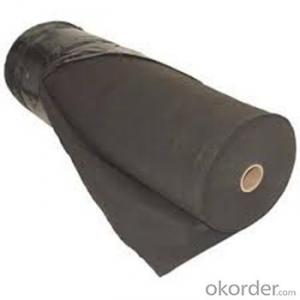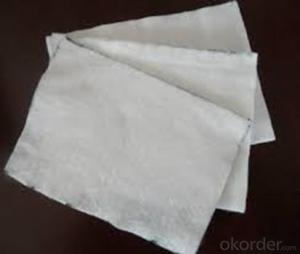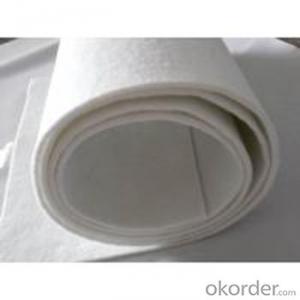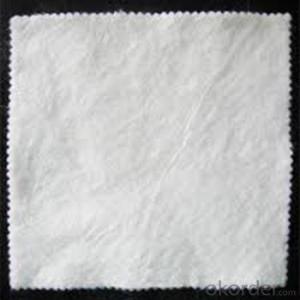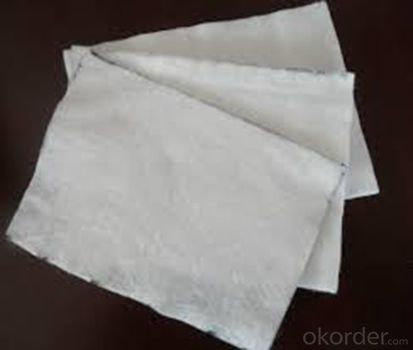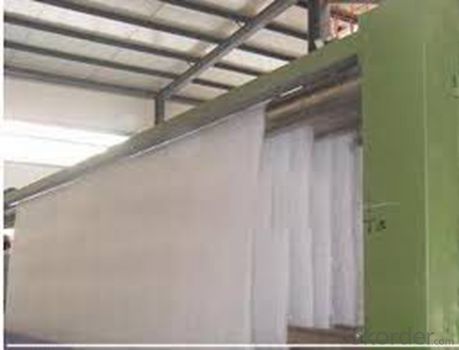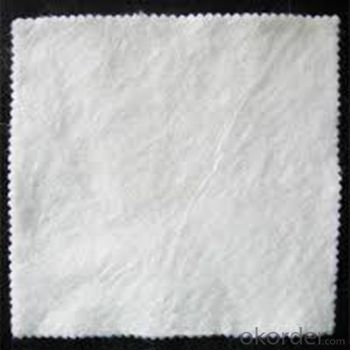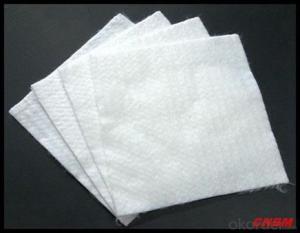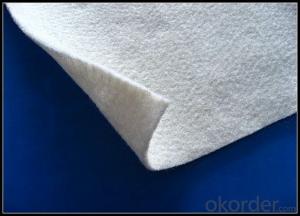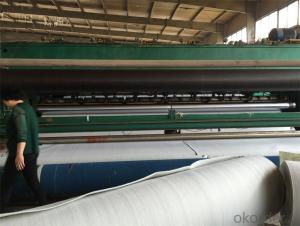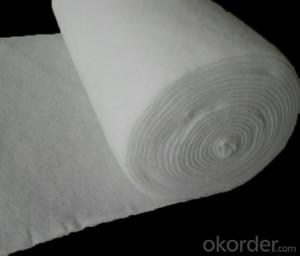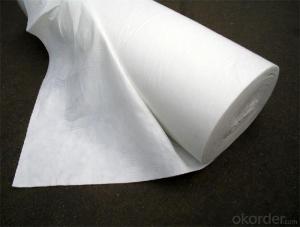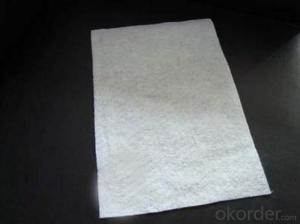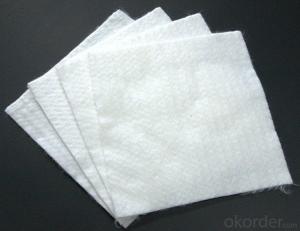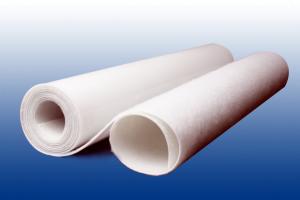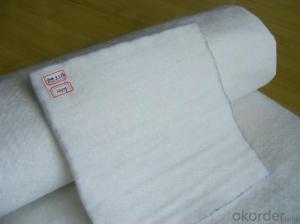Layfield Geotextile - Polyester Spunbond Non-Woven Geotextile Fabric
- Loading Port:
- China main port
- Payment Terms:
- TT OR LC
- Min Order Qty:
- 1000 m²
- Supply Capability:
- 500000 m²/month
OKorder Service Pledge
OKorder Financial Service
You Might Also Like
Specification
Introduction:
Filament needle punched nonwoven geotextile using all new polyester resin spunbonded continuous filament needle punched geotextiles are manufactured by the extrusion of fibers which are then laid down on a manufacturing "bed" and then needle punched from both top and bottom to entangle the fibers to produce a dimensionally stable geotextile.
Material | PP (polypropylene), Virgin PET(polyester), recycle PET |
Techinics | thermally bonded and needle punched |
Specification | Usually 100g/m2 to 1200g/m2 or as your demand |
Width | 1m to 6m(as you demand) |
Length | 100m(as you demand) |
Colour | White,Green,Grey,Black.etc |
Packing | PE film and woven cloth, paper core inside if you ask. |
Functions
1.Separation
The isolation of the railway dregs and the roadbed, roadbed and the soft base, surface of the airdrome and parking lot and the groundsill, different dam materials. It isolates the soil and the gravel of two kinds different
granule pathway from the groundsill or other buildings.
2.Reinforcement
The highway, railway, soil-stone dam, breakwater, airport, backfill soil of retaining wall, slope protection, etc in which distributes the earth stress, prevents the side-displacement of the earth body and improves the earthbody stability.
3.ProtectionIt prevents the bank from being washed out, protects the bank and the
bottom, prevents the water and soil from being washed away

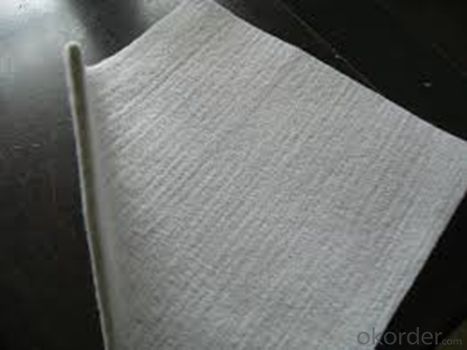
Packaging & Shipping
Packing: PLASTIC FILM INSIDE, AND WOVEN BAG OUTSIDE
Shipping: About 15 days after receipt the deposit
pecifications
geotextile fabric
permeability,filtration,easy for construction
ISO and CE certificate
Good quality and competitive price
Our Service
Quality assurance
1.On a regular basis or as per your request,we entrust national testing agencies to conduct quality inspections
2. Strictly in accordance with the ISO9001-2008 international quality system standard,we monitor and manage the whole process throughout production,quality testing,and measurement to ensure product quality
3. For quality-related construction delay or substandard construction(except for damage or losses due to customer’s responsibility or irresistible natural disasters),we have refunding,replacement,and repair services.We will respond to customers’ feedbacks on quality issues within 24 hours.
After-sales service
1.In order to provide customers with comprehensive technical support,we will provide technical and other related information upon request in a timely manner.
2.In required,we will appoint specialized technicians to the construction site to give technical trainings to construction people,and offer technical guidance throughout the whole construction process.
3.For damage due to shipment and delivery,after we receive the complaint,we will check the issure through provided pictures and videos.If our responsibility is confirmed,we wil offer free replacement.
4.When the construction is completed,as your request,our technical staff may participate in the final acceptance.
FAQ:
Q: What kind of payments does jenor support?
A: T/T, L/C, Cash are accepted.
Q: Do you charge for the samples?
A: Accordeing to our company policy, the samples are free, we only charge the freight fee. And we will return the freight fee during the next order.
Q: Can you produce according to customers' design?
A: Sure, we are professional manufacturer, OEM and ODM are both welcome.
Q: Do you have other products?
A: Yes, please check the pictures:
- Q: What is the purpose of using geotextiles in construction projects?
- The purpose of using geotextiles in construction projects is to improve the stability, durability, and overall performance of the construction site. Geotextiles act as a barrier against soil erosion, provide filtration and drainage capabilities, and enhance soil reinforcement. They also help in the separation of different soil layers, preventing contamination and maintaining the integrity of the project.
- Q: How are geotextiles different from other geosynthetic materials?
- Geotextiles are a type of geosynthetic material that is specifically designed for filtration and separation purposes in civil engineering applications. Unlike other geosynthetic materials such as geogrids or geomembranes, geotextiles are predominantly made of woven or non-woven fabric, which gives them excellent filtration and drainage properties. Additionally, geotextiles are more flexible and have higher tensile strength compared to other geosynthetics, making them suitable for a wide range of soil stabilization and erosion control applications.
- Q: What are the factors to consider when installing geotextiles?
- When installing geotextiles, some factors to consider include the type and quality of the geotextile, the site conditions and soil characteristics, the required strength and permeability of the geotextile, the installation method, and the long-term performance and durability requirements. Additionally, factors such as the potential for water flow, environmental considerations, and any specific project requirements should also be taken into account during the installation process.
- Q: Geotextile cloth and no square what meaning
- Geotextile, also known as geotextile, originated in the twentieth century, the fifties. Raw materials are polyester, polypropylene, acrylic, nylon and other polymer polymer synthetic fiber. Geotextiles are woven and non-woven. Not "Square", it is divided by the manufacturing process, the use of textile technology made of geotextile called spinning, and vice versa for non-woven geotextile. Due to the low cost of spinning geotextile, the cost is slightly higher. Most of the current engineering applications are non-woven geotextiles. They have a filter, filter, isolation, reinforcement, protection, and other functions.
- Q: How do geotextiles aid in the reduction of soil compaction?
- Geotextiles aid in the reduction of soil compaction by providing a layer of material that distributes the load more evenly, reducing the pressure on the soil. This helps to improve soil structure, increase porosity, and enhance drainage, ultimately preventing soil compaction.
- Q: Composite geotextile 20-500-0.5 what it means
- 0.5 should be the film thickness of 20-500. Did not understand the estimated cloth is the bar, not like
- Q: Can geotextiles be used in shoreline protection projects?
- Yes, geotextiles can be used in shoreline protection projects. Geotextiles are often utilized in coastal erosion control and shoreline stabilization efforts as they can help to prevent soil erosion, control sediment movement, and enhance the stability of shoreline structures.
- Q: Geotextile 100 meters a roll is about how much diameter
- Look at the pressure roll it pressure in the 20-40 cm I was the manufacturer
- Q: How do geotextiles help in reducing the impact of heavy rainfall on soil?
- Geotextiles help in reducing the impact of heavy rainfall on soil by acting as a barrier that prevents soil erosion. They are placed on the soil surface or within the soil profile to stabilize it and improve its drainage capacity. Geotextiles allow water to pass through while retaining soil particles, preventing them from being washed away by the force of rainfall. This helps in maintaining soil structure, reducing erosion, and minimizing the loss of valuable topsoil.
Send your message to us
Layfield Geotextile - Polyester Spunbond Non-Woven Geotextile Fabric
- Loading Port:
- China main port
- Payment Terms:
- TT OR LC
- Min Order Qty:
- 1000 m²
- Supply Capability:
- 500000 m²/month
OKorder Service Pledge
OKorder Financial Service
Similar products
Hot products
Hot Searches
Related keywords

